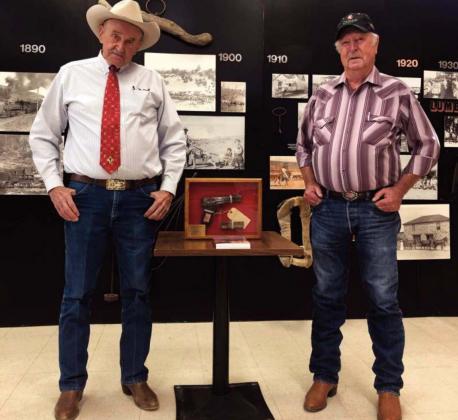GRANTS, N.M. – In 1967 a crime occurred in Budville, New Mexico, that would have a stunning effect on history. The incident gave the small Cibola County community the nickname, “Bloodville.”
Now, the gun used to commit the murders of Bud Rice and his employee all those year ago has been donated to the Cibola County Historical Museum. While the museum remains under construction, the building is coming together nicely. With a wall dedicated to the historical timeline of Cibola County, to a section dedicated to the logging history of the county, the museum adds a gruesome piece of history to its halls.
The gun
Don Bullis is a New Mexican historian, and after holding on to the firearm for several years he decided the best place for it would be in the history museum.
In the early 1980s Bullis had requested to see the legal records associated with the Budville murders; a few weeks went by before Bullis was be informed that those records were no longer available.
Undeterred, Bullis later came into contact with a defense attorney for Billy Ray White, a man who stood trial for the murders but was never found guilty despite being
By Diego Lopez Reporter positively identified by an eyewitness at the scene of the crime.
Bullis explained that this attorney had access to the full file, including the firearm which was heavily damaged because, according to Bullis, it had been tossed into the Rio Grande river where it was later discovered and believed to be – but never officially identified as – the firearm to commit the crime.
Bullis held onto the firearm, even building a display case for it. Bullis identified the firearm as a Belgian Browning style 9-millimeter handgun. The firearm still has the original evidence sticker attached to it and although it was never proven to be the weapon which was used to commit the murders, it was considered the murderweapon.
“It more appropriately belongs here; I hope it will be a great addition,” Bullis said.
The museum
The Cibola County Historical Museum is operated by the Cibola County Historical Society. Members of the group said that the firearm will be locked up very night.
The museum is still under renovation as it fills its displays with pieces of Cibola’s past. Anyone wishing to visit the facility may catch a CCHS member at the museum between 10 a.m. and noon on Thursday. Masks are mandatory for any visitors.
The museum is located at 525 W. High Street in Grants, N.M.

